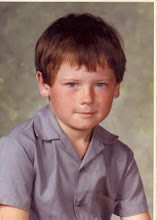Call for Papers: Ethnomusicology
XX EUROPEAN SEMINAR IN ETHNOMUSICOLOGY
The XX European Seminar in Ethnomusicology (ESEM) will take place from September 29 to October 3 in Venice, organized by the Intercultural Institute for Comparative Music Studies of the Fondazione Giorgio Cini. The Seminar will be based at the Fondazione, on the island of S.Giorgio Maggiore, located in the St. Mark basin. Participants will be hosted by the Istituto Salesiano, and the Istituto Benedettini, both located on the island. The Istituto Salesiano has 41 Rooms (E 87.00 for Double Room, E 57.00 for Single Room per night, including breakfast). The Istituto Benedettini has 11 Single rooms (E 50.00 with bathroom in the room, E 30.00 without bathroom in the room, per night). As there are few single rooms available, we would like to recommend to those who do not feel uncomfortable with the idea, to share a room. Please let us know about your room-sharing preferences together with your proposal if possible.
Topics
1. Sonic forms betweeen speech and song
In the oral tradition of every society one may notice several ways of formalizing discourse that can be placed between speech and song. They are characterized by the emphatic prominence of one or more suprasegmental traits (timbre, loudness, time, rhythm, intonation contours) in the enunciation of the linguistic message. Slogans, proverbs, greeting formulae, military orders and incitements, sapiential sayings, magic spells and formulae, prayers, ritual speech, nursery rhymes, cries of auctioneers, and vendors, but also various kinds of theatrical enunciations, declamation and mostly, poetic discourse, are all events in which the phonic character takes a coessential role, if not a predominant one, in relation to the more specific referential traits of the verbal enunciation. This phonic formalization of speech can affect vocal register (its frequency range, timbre, and intensity), melodic contour (either by means of its complete deletion by keeping a single pitch, or giving it a melodic articulation based on a musical scale), and/or the time of one's utterance (by means of a rhythmic segmentation often relying on a periodic measure unit).
It is not easy to determine whether such sonic formalization plays a merely "prosodic" (linguistic) function, or, whether it takes the explicit character of a musical codification. However, all leads to think that the vast intermediate area between speech and song hides some interpretative keys necessary to understand, in a more general (intercultural) dimension the "musical code" and some of its essential symbolic procedures.
For all the reasons mentioned above, it might be worth taking up again a systematic study of the intermediate forms between speech and song, in the light of new findings and research.
2. Visual ethnomusicology, and multimediality.
Ethnomusicology is increasingly relying on the use of audiovisual media, both in research and in the dissemination of results. One may single out two main, and interrelated, aspects that seem to be worth discussing.
a) The eye of the ethnomusicologist: the use of video from fieldwork to editing.
Developments of digital technologies have enhanced the use of the visual dimension both in fieldwork and in scientific, and didactic dissemination. However, the assumed "easiness" of the medium is misleading as the complexity arises from the endless possibilities at the moment of shooting, and in editing. What are the criteria, and what are the results in the use of different techniques ? How does one make different choices both in shooting (use of one or more cameras, composition of shots, lighting, separate audio track, etc.) and editing (length of sequences, relationship between sound and image, use of narration, subtitles and graphics, etc.) ?
Is it possible to define different styles and/or production models, such as, for television programs, for research purposes, for teaching, and so on ?
b) Multimediality in ethnomusicology
Digital technologies allow for a new integration of different types of information such as texts, sound, images, graphics, and animation, together with increasingly refined forms of interactivity. One aspect that seems particularly interesting for its methodological implications, is the use of multimedia products, such as CD-ROM, DVD, and websites, for the construction of a multilinear ethnomusicological discourse, through the use of graphics, animation and interaction eye/ear, in representing musical structures and their perception,
Format
ESEM is a seminar rather than a conference: we host collegial meetings open to researchers from all parts of the world in which participants can gather to share ideas and discuss recent work in ethnomusicology in an informal setting. In order to do this, we may need to limit the number of paper presentations (that should not exceed 20 minutes in length), but nonetheless we do all we can to support those who wish to attend (for instance, by welcoming poster presentations). We also welcome proposals for complete panels (including round table discussions, of up to 90 minutes). In particular, for topic n. 2 we shall also consider the presentation of materials in the form of posters and a limited number of evening video projections. Panels, individual papers, posters, and materials should be related to one of the two themes above. We may also consider including some selected free papers. However, abstracts related to the two main themes will have the priority.
Abstracts of up to 300 words (for a paper of 20 minutes of for another format) should be sent before the submission deadline of March 31, 2004, to the address below. For further information and any questions please contact:
Prof. Dr. Giovanni Giuriati
Intercultural Institute for Comparative Music Studies
Fondazione Giorgio Cini
Isola di S.Giorgio Maggiore
30124 Venezia
Italy
Tel.: +39-041-5230555
Fax: +39-041-5238540
e-mail: musica.comparata@cini.it


<< Home